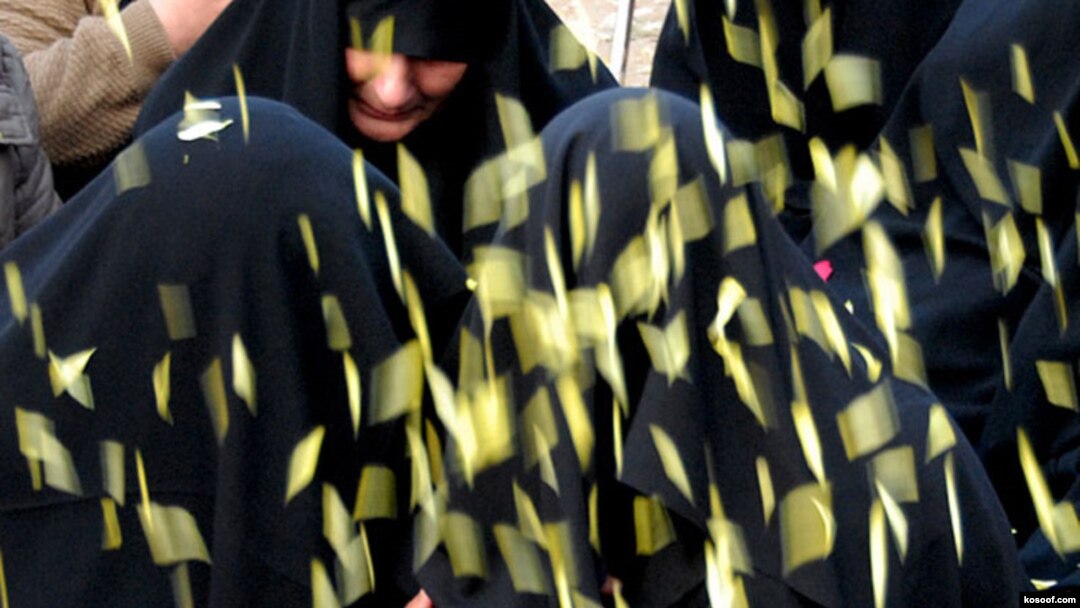But last October, Bani Yaqub was arrested while walking in a park in the western city of Hamadan with her male companion. The next day, she was dead.
Police say she committed suicide in prison overnight, but her family says that’s impossible -- that she was happy and upbeat about her future as a urologist. They accuse prison authorities of killing Bani Yaqub, whose case is merely the latest in a series of suspicious deaths or tortures in prison to be highlighted by human rights activists.
Shirin Ebadi, the Iranian human rights attorney who won the Nobel Peace Prize, told RFE/RL’s Radio Farda that she is handling Bani Yaqub’s case as a suspicious death under detention.
"I found many controversies in [Bani Yaqub’s] case: for instance, the exact time of Zahra’s death; also the height of the bar from which Zahra allegedly has hanged herself, and its contrast with Zahra’s height. Furthermore, the official reports about the way she was arrested and was kept in detention are dubious," Ebadi said.
In its report last month, the independent Iranian group Human Rights Defenders severely criticized the harsh treatment of detainees and prisoners across the country. In particular, the report focuses on the Shapur Street bureau of Tehran’s Agahi criminal department detention center. According to the rights group, hundreds of detainees are routinely tortured there in order to extract "confessions."
The activists maintain that such abuses occur before suspects are officially charged or have had access to a lawyer.
Beatings
One young Iranian woman who spent some time in Agahi told Radio Farda that she experienced severe torture from the moment she was entered the facility: "On the first day, they told me: ‘We are going to make roasted chicken out of you.’ I thought perhaps they would beat me up so badly that I would turn red like a roasted chicken. But they brought some instruments. They tied my hands up and hanged me from the ceiling. They put a water pipe between my legs and hands and started to pull the pipe. Then they started to beat my feet with a belt."
The former prisoner said her interrogator told her that she was "either going to die or to confess." She said it is not surprising that many suspects "admit their guilt" under duress.
Some Iranian lawyers deny that torture is used in Iranian prisons, and insist interrogators use only "a few methods, including beating or sleep deprivation." They say such procedures are routine in police detention facilities around the world.
But Ali Rahimi, a human rights activist, tells Radio Farda that Iranian authorities see torture as a deterrent to crime and that its use is widespread in Iranian prisons.
"Unfortunately, it is an established method for the Iranian police. According to this method, when a suspect enters a detention center, he has to be beaten up and insulted in order to intimidate and punish him, and supposedly, to prevent him from committing further crimes," Rahimi says. "Sometimes, they even detain suspects’ relatives in order to put pressure on them. In some cases even family members become subject to torture in order to put the pressure on the detainee."
Naser Zarafshan, a Tehran-based defense lawyer who represents leftist students imprisoned in the capital’s notorious Evin prison after antigovernment protests last year, says that solitary confinement -- even without physical abuse -- is a severe form of psychological torture that is widespread in Iranian prisons.
"There are also interrogations methods. One of the simplest examples is sleep deprivation of suspects by interrogating them at nighttime. They also use intimidation methods such as claiming that they would arrest suspects’ family members," Zarafshan says. "Sometimes they give false information to prisoners; for instance, they play the recorded voice of one of his family members to make the detainee believe that his relative has been arrested, too."
For their part, Iranian judiciary authorities have actually acknowledged that ill-treatment of suspects and inmates takes place in the country’s prisons.
In an unprecedented report in July 2005, judiciary authorities listed several detention facilities where serious abuses had taken place. They included Agahi, the Public Establishment Office detention facilities, and the Ministry of Intelligence and Security’s infamous Section 2009 at Evin.
The Iranian government welcomed the report. But rights activists dismissed that as an attempt by officials to show concern about human rights.
(RFE/RL’s Radio Farda contributed to this report.)


